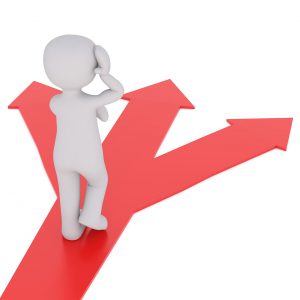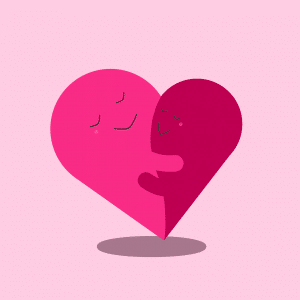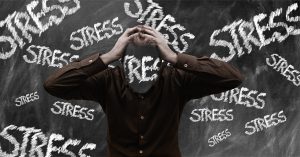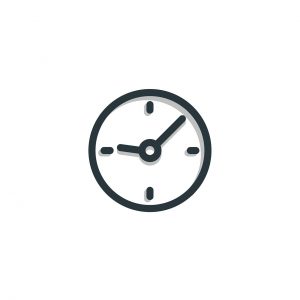Who loves math out there? Anyone? Anyone? Ok, so maybe math isn’t most people’s idea of a good time, but you might change your mind about this subject when we tell you that mathematicians claim they hold the solutions to all of life’s dilemmas in their hands. And that solution? The number 37. That’s right, mathematicians claim that the number 37 is the key to navigating all of life’s toughest decisions, you just have to know how to follow what’s known as the “37% rule.” So what is this magical formula, and is it really as transformative as it claims to be?
A Decision within a Decision

At the heart of every major decision in life, whether it’s who you should marry, which house you should buy, which career you should pursue, etc, is another decision. And that decision-within-a-decision might actually be harder to deal with than the main decision: when should you stop researching, gathering information, or mulling over your options and just choose?
You know exactly what we’re talking about, don’t you? That feeling that if you stop shopping around too soon you risk missing out on the exact right thing for you. But, then, if you spend too much time researching and overthinking, you could end up with so much decision fatigue that you just, well, can’t with that anymore, and you end up completely paralyzed. Yikes, right?
That’s where the 37% rule comes in. It’s really rather neat and beautiful, actually: mathematicians tell us, in a nutshell, that you should spend the first 37% of your decision-making process gathering information and committing to nothing. After that period, choose the next option that comes along that’s better than what you’ve already seen.
In other words, let’s say you need to make a decision out of 100 options. This rule tells us that you should sample and reject (or at least hold off on) the first 37, and then choose the best option that comes along. Why, you ask? It’s all about doing the math, and it seems to work astoundingly well in the world of numbers – but human psychology might have something else to say about the matter.
Doing the Math
The whole 37% thing is not some arbitrary number that mathematicians have thrown out into the world, and the concept is not about making mindless, automatic decisions. In fact, your “rejection period” is actually a time when you are gathering information and identifying what works and what doesn’t. That means you should actually have a pretty good idea of what a good option looks like after you’ve looked at 37% of your options (or spent 37% of your time looking), so theoretically you should know when something good comes along at the end of your rejection period.
Ok, but how does the math work, and how does the 37% rule look in (theoretical) real-world situations? We won’t give you the intense mathematical formulas, but rest assured they exist, and they point to the fact that rejecting the first 37% of your choices and then choosing the next best option gives you a pretty high chance of success at finding the right partner, house, assistant, etc. This is also known in the math world as “optimal stopping theory,” an area of math concerned with the problem of choosing a time to take a particular action, in order to maximize an expected reward or minimize an expected cost.
Bizarre as it seems to apply the stark world of math to the messy world of romance, mathematician Hannah Fry gives an example of the 37% as applied to dating: this theory “tells you that if you are destined to date ten people in your lifetime, you have the highest probability of finding The One when you reject your first four lovers (where you’d find them 39.87% of the time). If you are destined to date 20 people, you should reject the first eight (where Mister or Miz Right would be waiting for you 38.42% of the time). And, if you are destined to date an infinite number of partners, you should reject the first 37%, giving you just over a one in three chance of success…If you chose not to follow this strategy and instead opted to settle down with a partner at random, you’d only have a 1/n chance of finding your true love, or just 5% if you are fated to date 20 people in your lifetime, for example. But by rejecting the first 37% of your lovers and following this strategy, you can dramatically change your fortunes, to a whopping 38.42% for a destiny with 20 potential lovers.”
But she also acknowledges there are some obvious problems with the formula: who can ever know how many people they’re destined to date? And who will ever have the possibility of dating infinite people (well, maybe if you’re on Tinder…) So she also points out that the theory also works if you look at it in terms of time instead of options, the mathematical formula is just a little more complicated. If you use the theory in this way, you only need to decide how long you want your dating life to last, then spend the first 37% of that time rejecting possible partners. Of course, this has its flaws, too: you could end up meeting the potential love of your life the minute you start dating and never find anyone better, or you could meet the worst possible partners during that 37% rejection period, and end up settling for the next Joe or Jane Schmo who comes along.
So maybe dating is not always the best use of the 37% rule. It might be safer to stick with using it to choose a house, assistant, or job, for example – something with less potential heartache at stake. You could, say, decide to look for a house for three months, and then check out the market for the first month without making any choices. Or if you’re looking to hire an assistant, you could commit to meeting 10 candidates, and reject the first three (although that seems harsh for them!)
And adherents to the 37% rule tell you to go all in. For example, Brian Christian in his book, Algorithms to Live By: The Computer Science of Human Decisions tells us, “If you want the best odds of getting the best apartment, spend 37% of your apartment hunt (eleven days, if you’ve given yourself a month for the search) noncommittally exploring options. Leave the checkbook at home; you’re just calibrating. But after that point, be prepared to immediately commit—deposit and all—to the very first place you see that beats whatever you’ve already seen. This is not merely an intuitively satisfying compromise between looking and leaping. It is the probably optimal solution.”
But even if you’ve been wildly searching for a way to take the weight of decision making off your shoulders, all of this might seem a little shaky. And you’re right: even mathematical formulas can’t compete with the human heart and all of our erratic impulses and illogical reactions. That means that the 37% is a great way to maximize the probability of success, but it can never guarantee it.
To Exploit or to Explore?
You’re probably thinking, yeah, we could’ve told you that: there are no guarantees when it comes to the decisions life throws at us. And that’s not just because of the randomness of the universe, it’s also because of our crazy, chaotic selves. And the way we approach decisions, which is more about human psychology than numbers, has a huge impact on whether we’ll be destined to settle or destined to become paralyzed by decisions (although the hope is that we’ll all find a happy medium somehow).
So while mathematicians tell us to stay calm and use the 37% rule, psychologists tell us we’re all most likely grappling with the “exploit/explore” tradeoff, which asks whether you should go with the guaranteed win (“exploit”) or risk something new for an unknown outcome (“explore”). And we will usually spend much of our lives leaning one way or the other – as either an exploiter or an explorer, and going to extremes on either side can have serious downsides.
Exploiters run the risk of getting constantly stuck in ruts and being bored, while explorers run the risk of never fully experiencing anything in-depth or becoming experts at anything. How do you know which you are? Try asking yourself questions like the following:
- If you visit a new place, are you more likely to pick a restaurant, for example, that you know will give you a solid experience, or are you more likely to go out on a limb and try something unknown?
- If you were told you could place a bet and win a guaranteed $50, or you could try your luck and look for other bets offering better odds, would you take the $50 or keep looking?
- When you’re playing a game, do you constantly use the same strategies, or do you try to always mix things up?
So which are you, an exploiter or explorer? And now here’s where we bring it all home: if you’re finding it hard to strike a balance between the two, and are either constantly avoiding making new choices, or throwing caution to the wind and not spending enough time on making decisions, you might find a little help from an algorithm a welcome change. The 37% rule, while not fail-safe, could give you some guidance and take a little bit of the weight of decision making off your shoulders.
Yes, it’s true that you should never blindly follow any theory like the 37% rule, but that doesn’t mean it can’t be helpful, or doesn’t have its merits. Giving yourself the leeway to use the first 37% of your decision making as a fact-finding mission can actually be freeing, and give you space to both think and act, as well as help you to figure out what you really want. After all, the key to good decision making is balancing exploration and decisive action, and the 37% rule might just help you find that balance. What do you think? Would you give an algorithm a chance to help you make important decisions in your life?



